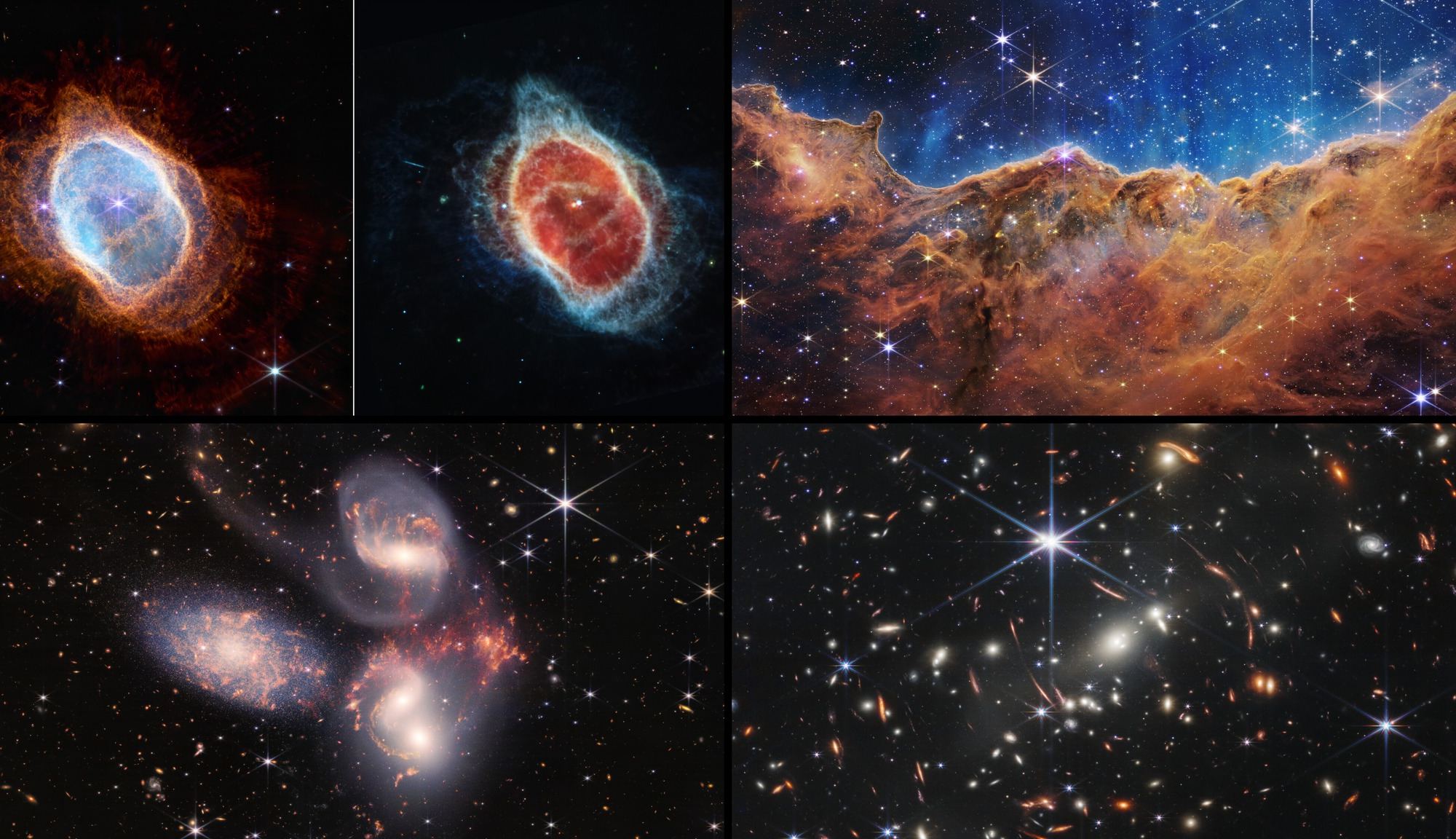The James Webb Space Telescope continues to deliver stunning images of the Universe, demonstrating that the years of development and delays were well worth the wait! The latest comes from Judy Schmidt (aka. Geckzilla, SpaceGeck), an astrophotographer who processed an image taken by Webb of the barred spiral galaxy NGC 1365. Also known as the Great Barred Spiral Galaxy, NGC 1365 is a double-barred spiral galaxy consisting of a long bar and a smaller barred structure located about 56 million light-years away in the southern constellation Fornax.
Continue reading “A New Image From Webb Shows Galaxy NGC 1365, Known to Have an Actively Feeding Supermassive Black Hole”Here’s the Largest Image JWST Has Taken So Far
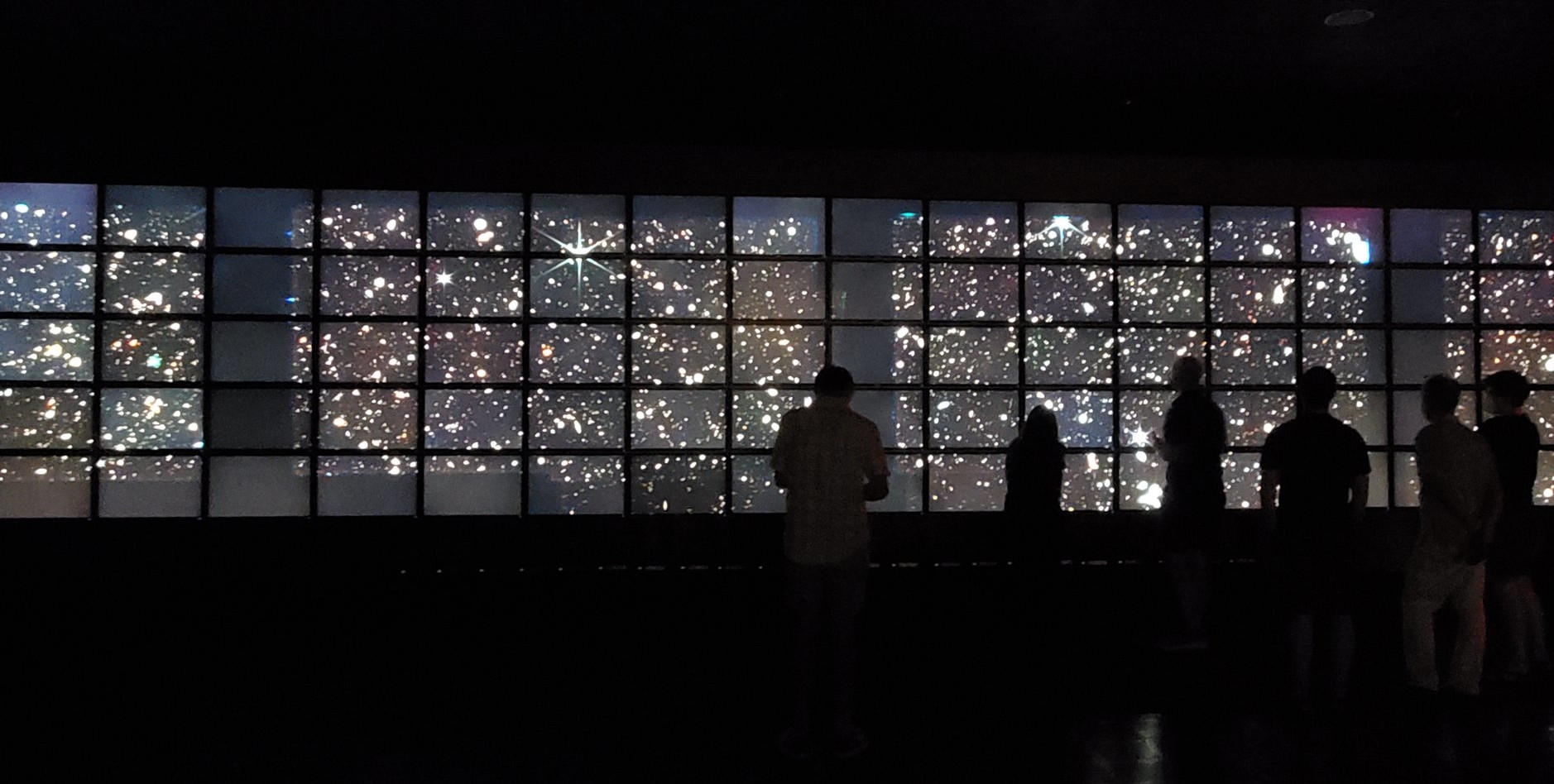
A team of scientists using the James Webb Space Telescope have just released the largest image taken by the telescope so far. The image is a mosaic of 690 individual frames taken with the telescope’s Near Infrared Camera (NIRCam) and it covers an area of sky about eight times as large as JWST’s First Deep Field Image released on July 12. And it is absolutely FULL of stunning early galaxies, many never seen before. Additionally, the team may have photographed one of the most distant galaxies yet observed.
Continue reading “Here’s the Largest Image JWST Has Taken So Far”Did you Want More Scientific Information About the First set of Images From JWST? Fill Your Boots
On July 12th, 2022, NASA and its partner agencies released the first James Webb Space Telescope (JWST) observations to the public. These included images and spectra obtained after Webb’s commissioning phase, which included the most-detailed views of galaxy clusters, gravitational lenses, nebulae, merging galaxies, and spectra from an exoplanet’s atmosphere. Less than a month after their release, a paper titled “The JWST Early Release Observations” has been made available that describes the observations and the scientific process that went into making them.
Continue reading “Did you Want More Scientific Information About the First set of Images From JWST? Fill Your Boots”JWST Turns Its Gaze on the Cartwheel Galaxy
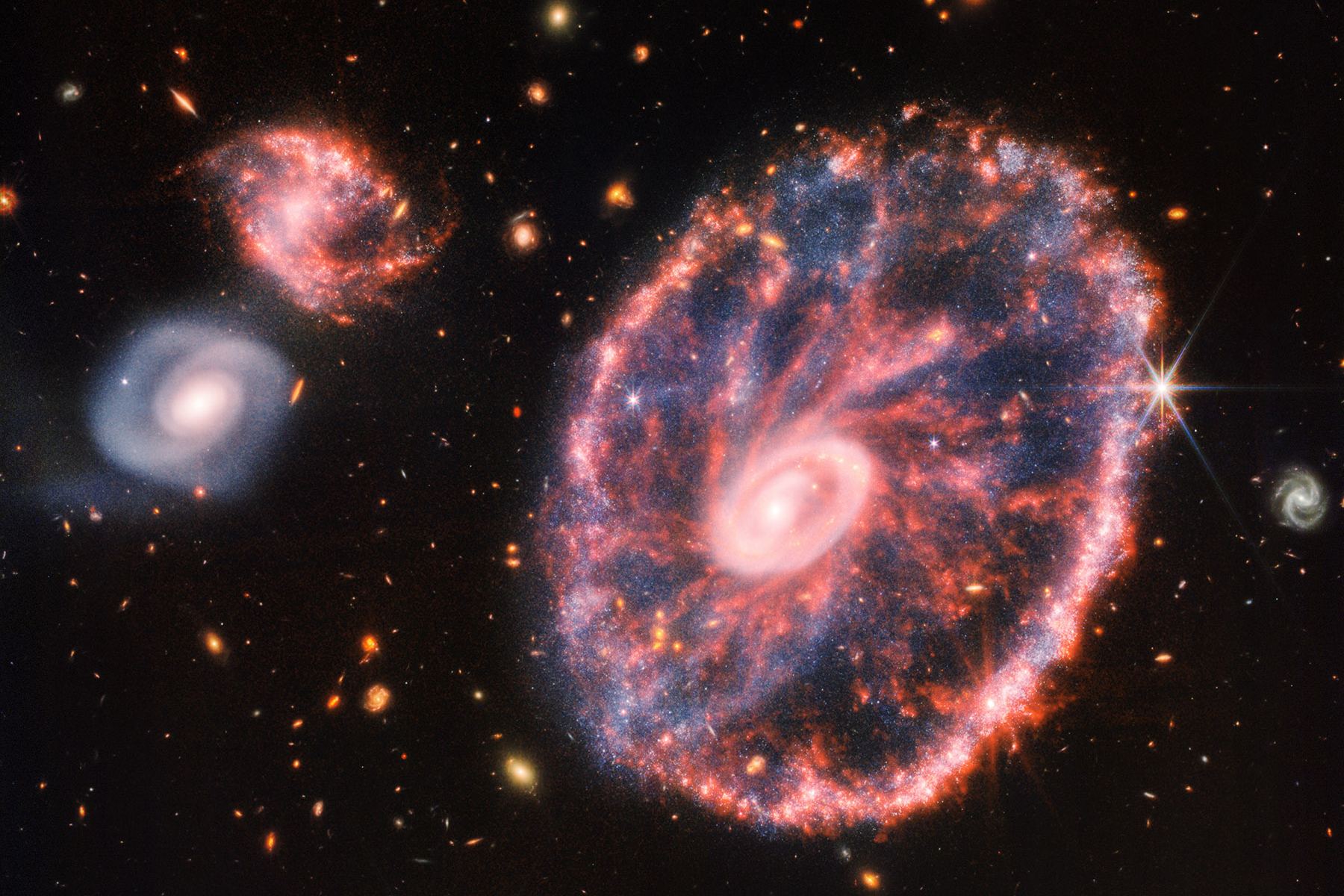
The Cartwheel Galaxy, also known as ESO 350-40, is one disturbed-looking piece of cosmic real estate. To look at it now, especially in the latest JWST view, you’d never know it used to be a gorgeous spiral galaxy. That was before it got involved in a head-on collision with a companion. The encounter happened somewhere around 200-300 million years ago. Essentially, the smaller galaxy “bulls-eyed” the Cartwheel, right through its heart. A shock wave swept through the system, changing everything. The aftermath is what we see in this latest image from JWST.
Continue reading “JWST Turns Its Gaze on the Cartwheel Galaxy”The Record for the Farthest Galaxy just got Broken Again, now just 250 million years after the Big Bang
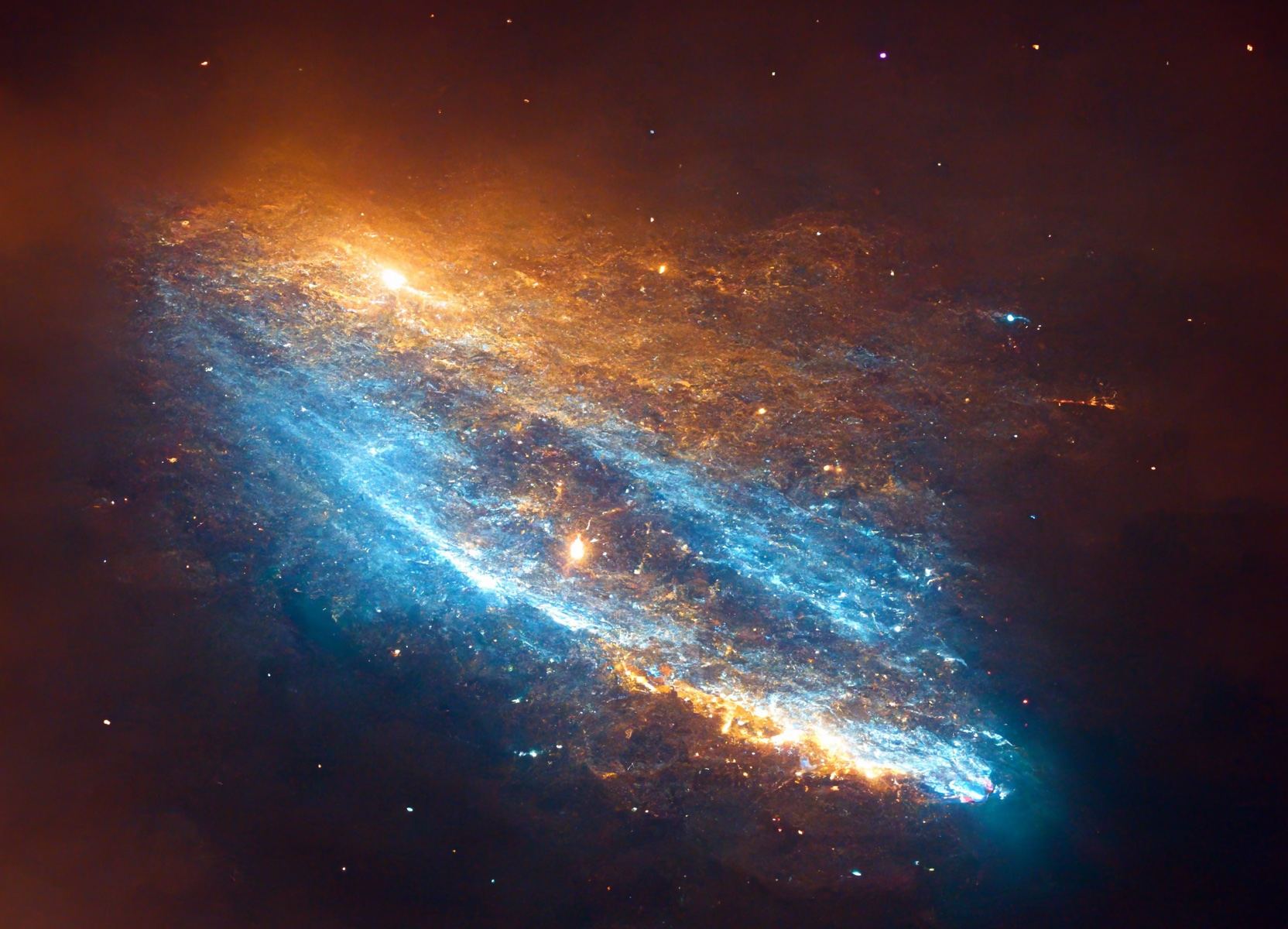
In a recent study submitted to MNRAS, a collaborative research team has utilized the first set of data from the James Webb Space Telescope (JWST) discovering a galaxy candidate, CEERS-93316, that formed approximately 250 million years after the Bing Bang, which also set a new redshift record of z = 16.7. This finding is extremely intriguing as it demonstrates the power of JWST, which only started sending back its first set of data a few weeks ago. CEERS stands for Cosmic Evolution Early Release Science Survey, and was specifically created for imaging with JWST.
Continue reading “The Record for the Farthest Galaxy just got Broken Again, now just 250 million years after the Big Bang”Even Citizen Scientists are Getting Time on JWST

Over the years, members of the public have regularly made exciting discoveries and meaningful contributions to the scientific process through citizen science projects. These citizen scientists sometimes mine large datasets for cosmic treasures, uncovering unknown objects such as Hanny’s Voorwerp, or other times bring an unusual phenomenon to scientists’ attention, such as the discovery of the new aurora-like spectacle called STEVE. Whatever the project, the advent of citizen science projects has changed the nature of scientific engagement between the public and the scientific community.
Now, unusual brown dwarf stars discovered by citizen scientists will be observed by the James Webb Space Telescope, with the hopes of learning more about these rare objects. Excitingly, one of the citizen scientists has been named as a co-investigator on a winning Webb proposal.
Continue reading “Even Citizen Scientists are Getting Time on JWST”The James Webb is Measuring Distant Galaxies 5-10 Times Better Than any Other Telescope

On December 25th, 2021, after many years of waiting, the James Webb Space Telescope (JWST) finally launched to space. In the sixth-month period that followed, this next-generation observatory unfurled its Sunshield, deployed its primary and secondary mirrors, aligned its mirror segments, and flew to its current position at the Earth-Sun Lagrange 2 (L2) Point. On July 12th, 2022, the first images were released and presented the most-detailed views of the Universe. Shortly thereafter, NASA released an image of the most distant galaxy ever observed (which existed just 300 million years after the Big Bang).
According to a new study by an international team of scientists, the JWST will allow astronomers to obtain accurate mass measurements of early galaxies. Using data from James Webb’s Near-Infrared Camera (NIRCam), which was provided through the GLASS-JWST-Early Release Science (GLASS-ERT) program, the team obtained mass estimates from some of the distant galaxies that were many times more accurate than previous measurements. Their findings illustrate how Webb will revolutionize our understanding of how the earliest galaxies in the Universe grew and evolved.
Continue reading “The James Webb is Measuring Distant Galaxies 5-10 Times Better Than any Other Telescope”Another Amazing Image from Webb, This Time it’s Galaxy IC 5332
The James Webb Space Telescope (JWST) continues to both dazzle and amaze with its latest image, this time of Galaxy IC 5332, also known as PGC 71775, which is an intermediate spiral galaxy located approximately 30 million light years away. This comes after JWST released its first images at its full power, which includes the Carina Nebula, Stephan’s Quintet, Southern Ring Nebula, and SMACS 0723, the last of which was the deepest and sharpest image of the distant universe to date.
Continue reading “Another Amazing Image from Webb, This Time it’s Galaxy IC 5332”Here’s M74 Like You’ve Never Seen it Before, Thanks to Judy Schmidt and JWST
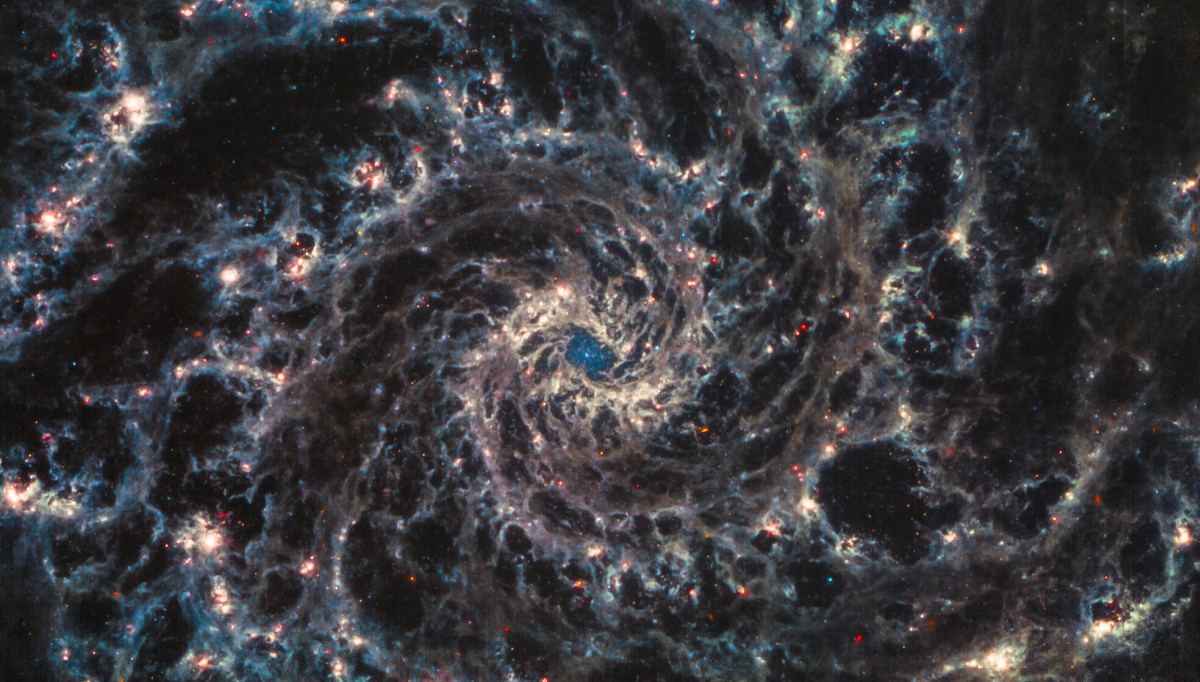
The JWST is grabbing headlines and eyeballs as its mission gains momentum. The telescope recently imaged M74 (NGC 628) with its Mid-Infrared Instrument (MIRI.) Judy Schmidt, a well-known amateur astronomy image processor, has worked on the image to bring out more detail.
Continue reading “Here’s M74 Like You’ve Never Seen it Before, Thanks to Judy Schmidt and JWST”You can see Where JWST Took a Direct hit From a Micrometeorite on one of its Mirrors

The world is still reeling from the release of the James Webb Space Telescope‘s (JWST) first images. These provided a comprehensive overview of the kind of science operations that Webb will conduct over its 20-year mission. They included the most sensitive and detailed look at some iconic astronomical objects, spectra from an exoplanet atmosphere, and a deep field view of some of the most distant galaxies in the Universe. Since their release, we’ve also been treated to glimpses of objects in the Solar System captured by Webb‘s infrared instruments.
Meanwhile, the JWST collaboration released a full report titled titled “Characterization of JWST science performance from commissioning,” in which they examined everything Webb has accomplished so far and what they anticipate throughout the mission. This paper recently appeared online and covers everything from the telescope’s navigation and pointing to the performance of its many instruments. An interesting tidbit, which was not previously released, is how Webb suffered a series of micrometeoroid impacts, one of which caused “uncorrectable change” in one mirror segment.
Continue reading “You can see Where JWST Took a Direct hit From a Micrometeorite on one of its Mirrors”

